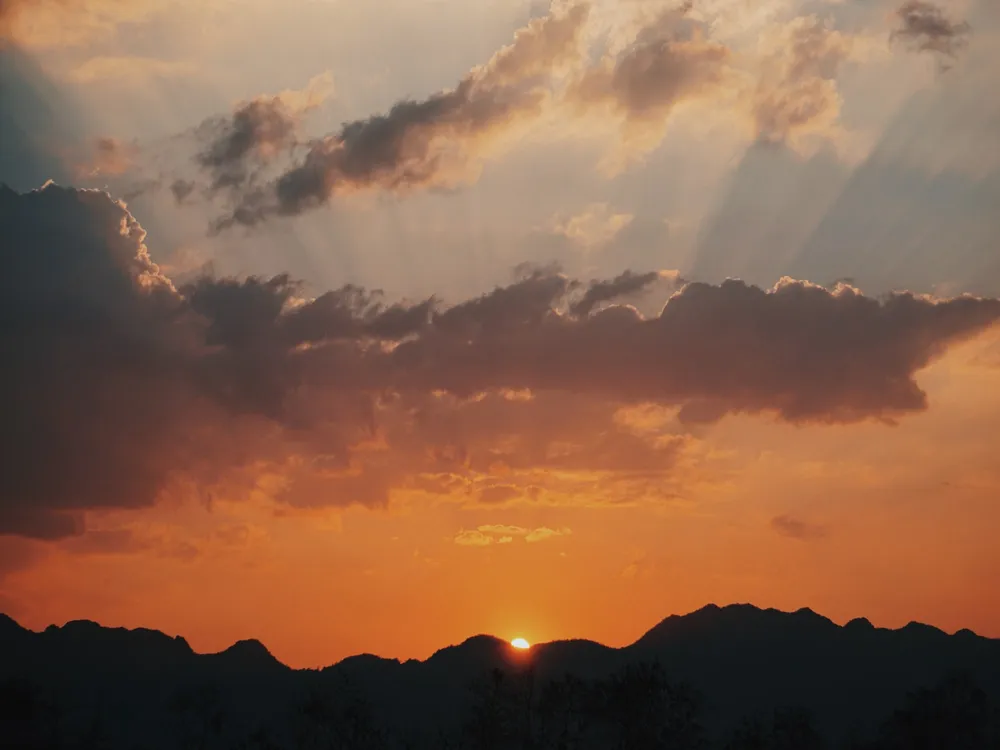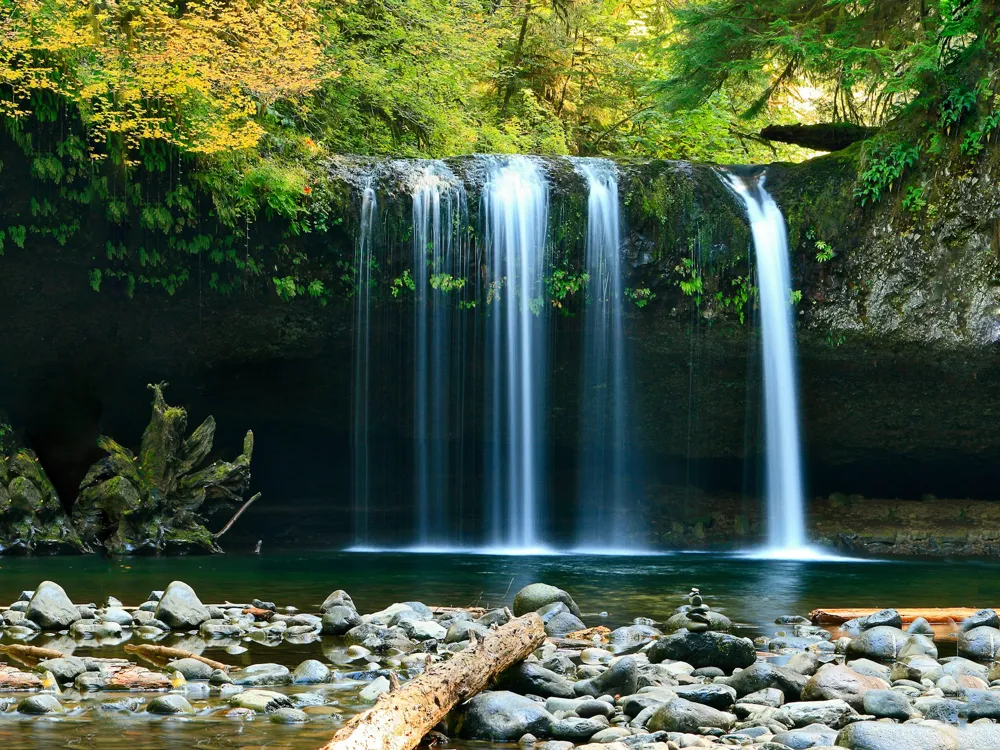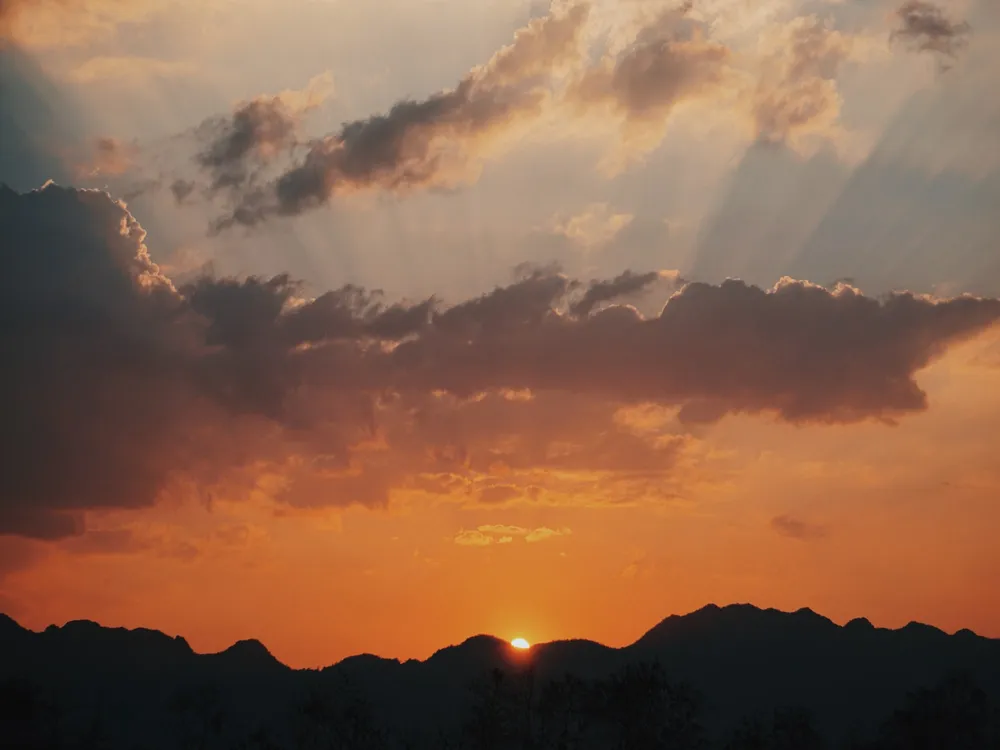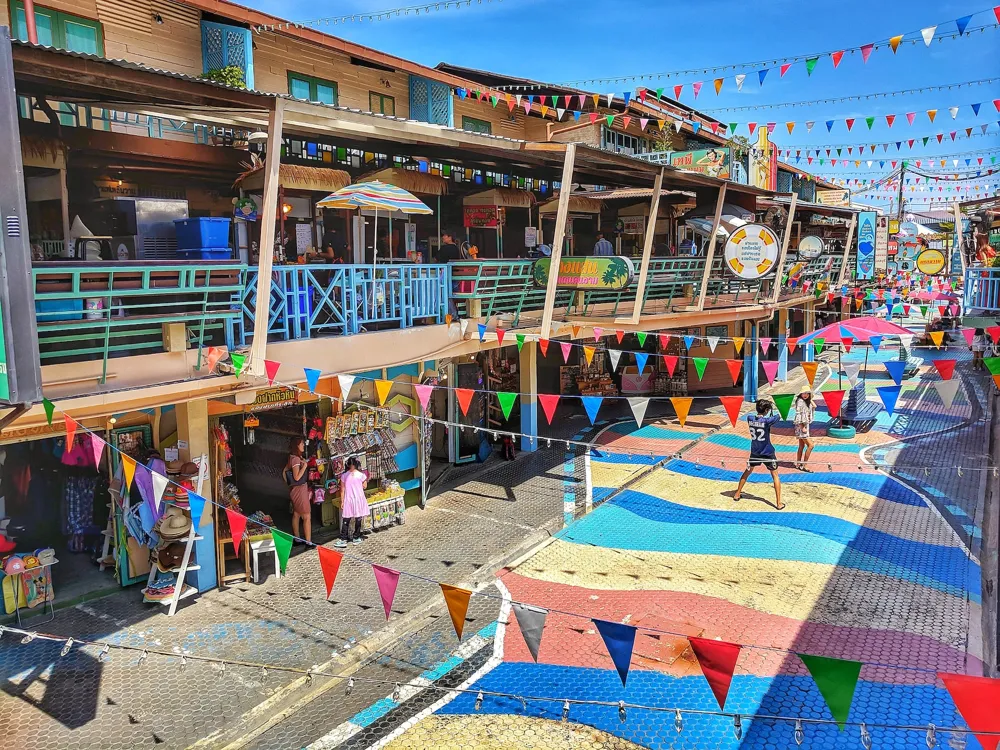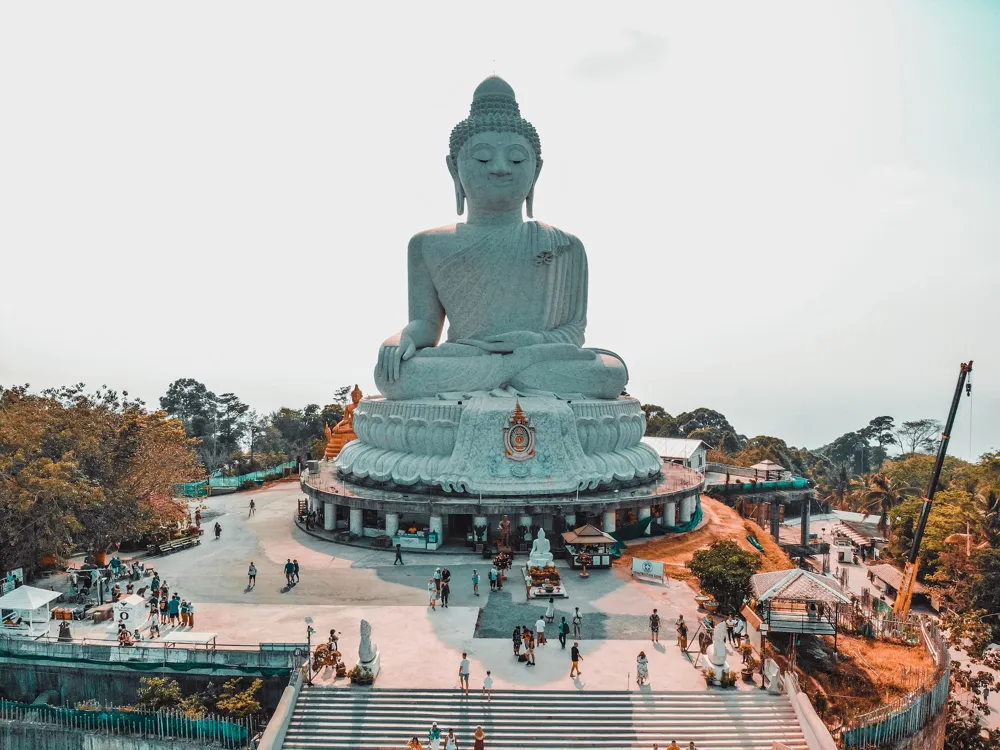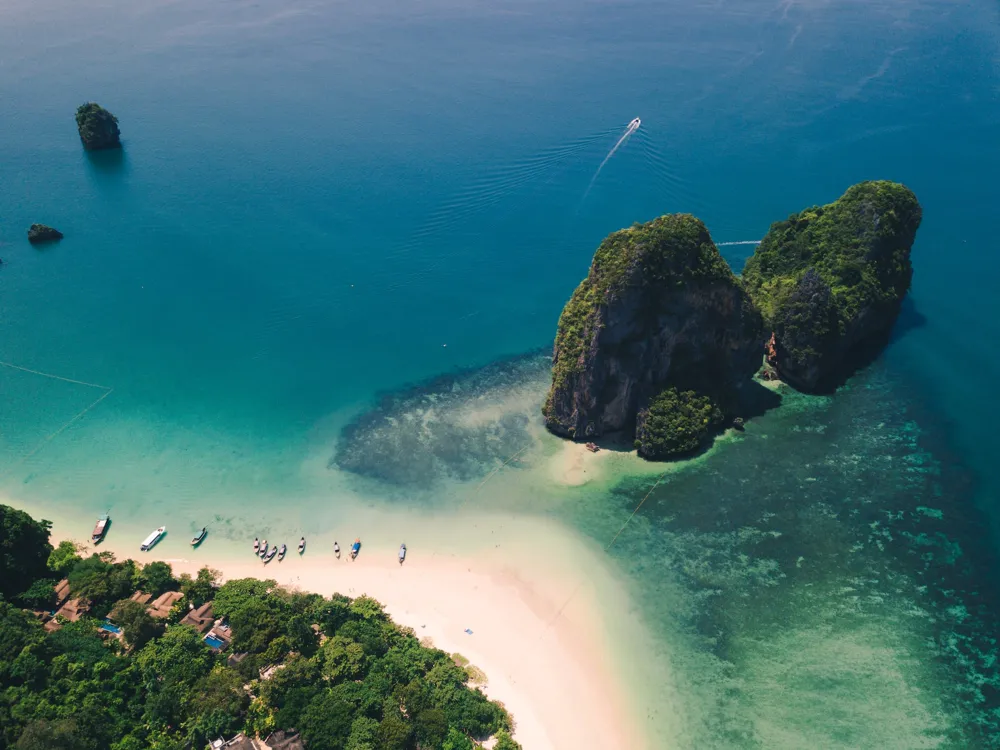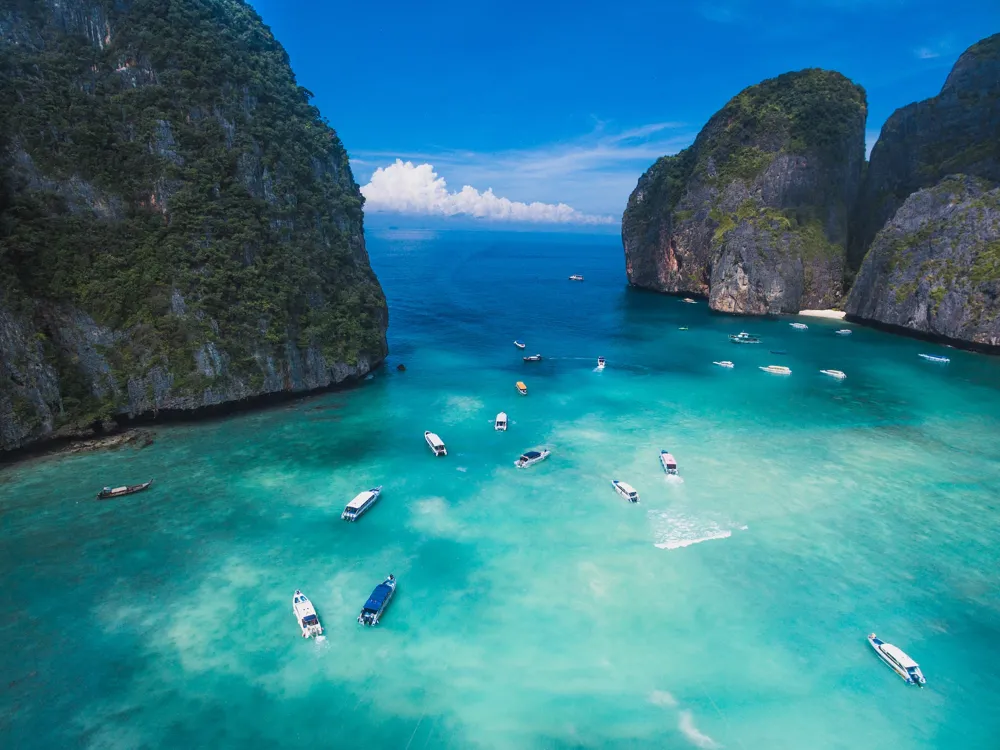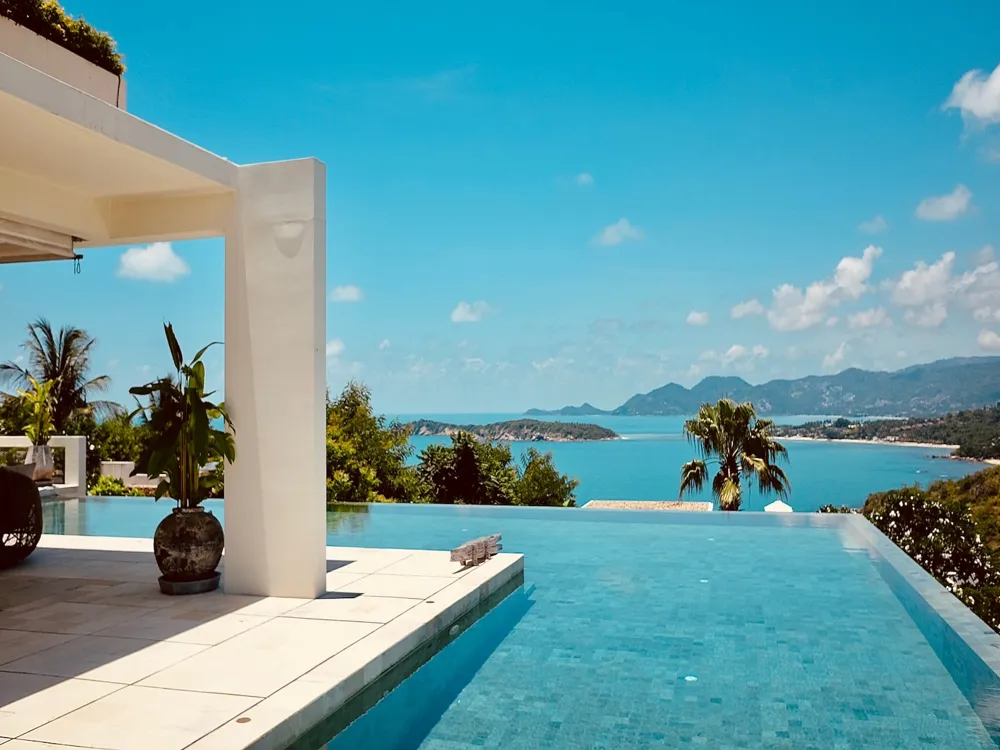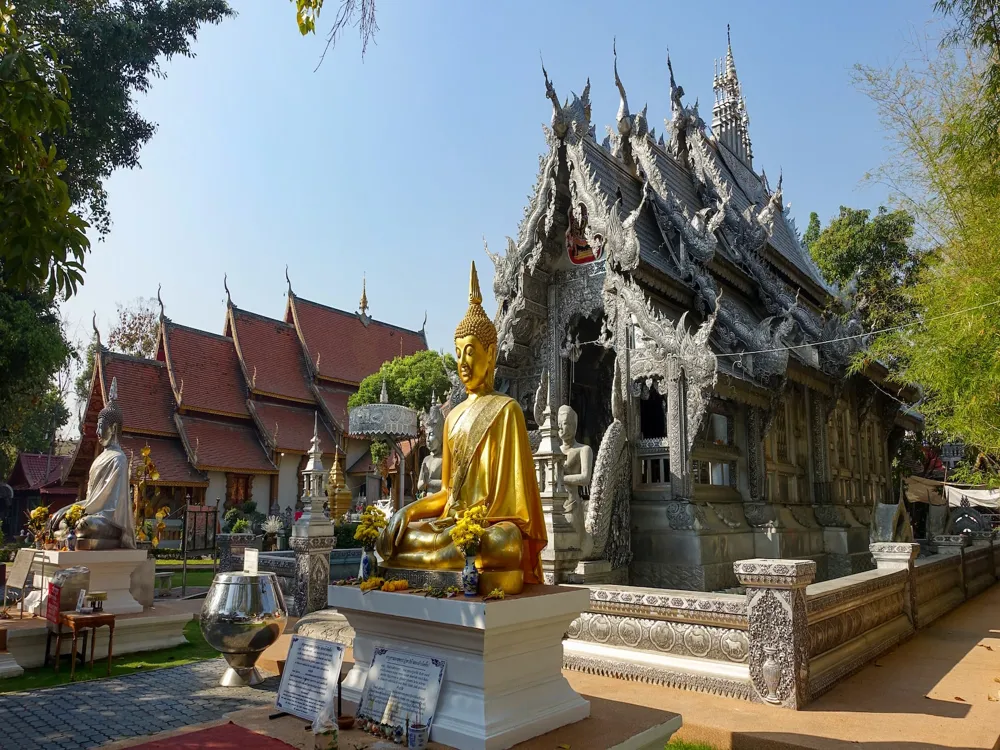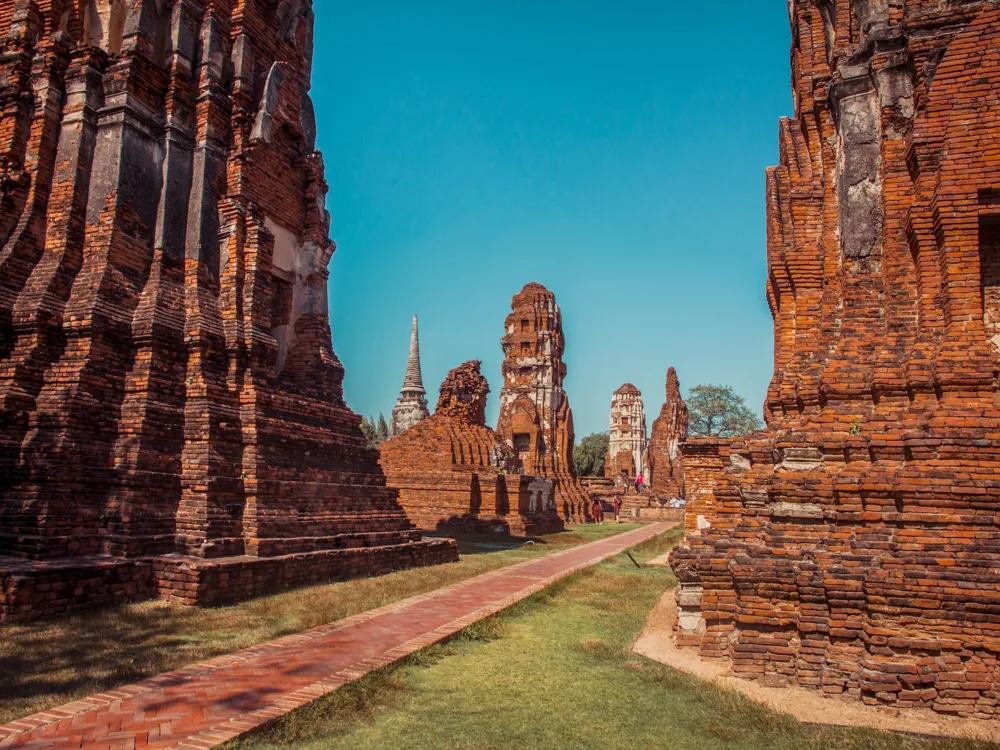Erawan National Park, located in the verdant province of Kanchanaburi, Thailand, is a nature enthusiast's paradise. Spanning over 550 square kilometers, this park is renowned for its spectacular scenery, diverse wildlife, and its star attraction, the Erawan Falls. Named after the three-headed elephant of Hindu mythology, these waterfalls are a symbolic representation of the park's majestic beauty. The park's landscape is a tapestry of lush forests, meandering rivers, and numerous caves. It's a haven for various species of flora and fauna, some of which are endemic to the region. The dense forests are home to a plethora of bird species, making it a birdwatcher's dream. Wild elephants, gibbons, and even leopards have been spotted within the park's confines, though they are elusive and sightings are rare. For those interested in geology and natural history, Erawan National Park offers a fascinating insight into the region's geological past. The limestone hills that dominate the landscape are dotted with caves, each telling a story millions of years old. These caves, with their stalactites and stalagmites, are natural marvels that intrigue visitors. The park is not just a natural wonder but also a place of historical significance. It's close to the infamous Death Railway and the River Kwai, sites that played pivotal roles during World War II. This proximity adds a layer of historical depth to the park, connecting the beauty of nature with the resilience of the human spirit. The climate in Erawan National Park is tropical, with the best time to visit being from November to February when the weather is cooler and the water levels in the falls are ideal for swimming. The rainy season, from May to October, brings a different kind of beauty to the park, with lush greenery and full-flowing waterfalls, but also makes some areas less accessible. Visitors to Erawan National Park can indulge in various activities. Hiking trails wind through the forest, leading to the upper tiers of the Erawan Falls, each tier offering a unique view and experience. Swimming in the natural pools is a refreshing activity, especially after a hike. For the more adventurous, exploring the caves provides a thrilling experience. The park also offers camping facilities for those who wish to immerse themselves in nature overnight. The architecture of Erawan National Park is not about man-made structures; it's about the natural architecture formed over millennia. The park's most prominent feature, the Erawan Falls, is a prime example of this natural architectural wonder. The falls cascade over seven tiers, each tier offering a distinct landscape and ecosystem. The limestone that forms the basis of these tiers has been shaped by the water over countless years, creating a series of natural pools and waterfalls. The park's caves are another aspect of its natural architecture. These caves have been formed within the limestone hills and are filled with intricate formations of stalactites and stalagmites. Caves like Tham Phra That and Tham Mi reveal a hidden world beneath the surface, each with its unique features. The way these caves have been naturally sculpted over time is a marvel of natural architecture, offering a glimpse into the earth's past. The park's biodiversity is also a significant aspect of its natural architecture. The varying ecosystems from dense rainforests to riverine landscapes have created habitats for a wide array of species. This biodiversity is an integral part of the park's architecture, as each species plays a role in maintaining the ecological balance. The intertwining of these ecosystems creates a living, breathing architecture that is ever-evolving. Even the park's trails and pathways are a part of its architecture. These trails, though created by humans, have been designed to blend seamlessly with the natural environment. They allow visitors to explore the park while minimizing the impact on the natural landscape. The trails leading to the upper tiers of the falls, for instance, are carefully constructed to provide access while preserving the natural beauty and integrity of the environment. The architectural philosophy of Erawan National Park is one of coexistence and minimal human impact. The park authorities have taken great care to ensure that any developments, such as visitor centers, camping areas, and restrooms, are built with sustainability in mind. These facilities are designed to cater to the needs of visitors while preserving the park's natural beauty and ecological balance. In conclusion, the architecture of Erawan National Park is a testament to the beauty and complexity of the natural world. It's a place where natural processes have created a landscape of immense beauty and diversity, a landscape that is both a refuge for wildlife and a source of inspiration and rejuvenation for visitors. The ideal time to visit Erawan National Park is from November to February when the weather is cooler and drier. This period offers the best conditions for hiking and enjoying the waterfalls. However, the park's beauty is year-round, with each season offering a unique experience. Essential items include comfortable hiking shoes, swimwear, a towel, insect repellent, sun protection, and plenty of water. It's also advisable to bring a camera to capture the park's stunning scenery and a small first-aid kit for emergencies. Respect for nature is paramount. Visitors should avoid littering, disturbing wildlife, and straying from marked trails. It's essential to leave the park as pristine as you found it to preserve its natural beauty for future visitors. The natural pools at the waterfall tiers are great for swimming. Always check the depth before diving in and be cautious of slippery rocks. Also, be mindful of the park's guidelines for swimming areas to ensure safety. There are several accommodation options ranging from camping within the park to nearby hotels and guesthouses. Booking in advance is recommended, especially during the peak season. Erawan National Park is accessible from Bangkok and other major cities in Thailand. The most common way to reach the park is by road. Visitors can opt for buses, taxis, or rent a car to drive to the park. The journey from Bangkok takes approximately 3-4 hours. There are also local buses and minivans available from Kanchanaburi town to the park. For those seeking a more scenic route, a train journey to Kanchanaburi followed by a bus or taxi to the park offers a unique experience. It's important to check the latest travel schedules and options before planning your trip. Read More:Overview of Erawan National Park
Architecture of Erawan National Park
Tips When Visiting Erawan National Park
Best Time to Visit
What to Bring
Park Etiquette
Swimming Tips
Accommodation Options
How To Reach Erawan National Park
Erawan National Park
Kanchanaburi
₹ 24,500 onwards
View kanchanaburi Packages
Weather :
Tags : National Park
Entry Fee : 200 Baht
Planning a Trip? Ask Your Question
Kanchanaburi Travel Packages
View All Packages For Kanchanaburi
Top Hotel Collections for Kanchanaburi

Private Pool

Luxury Hotels

5-Star Hotels

Pet Friendly
Top Hotels Near Kanchanaburi
Other Top Ranking Places In Kanchanaburi
View All Places To Visit In kanchanaburi
View kanchanaburi Packages
Weather :
Tags : National Park
Entry Fee : 200 Baht
Planning a Trip? Ask Your Question
Kanchanaburi Travel Packages
View All Packages For Kanchanaburi
Top Hotel Collections for Kanchanaburi

Private Pool

Luxury Hotels

5-Star Hotels

Pet Friendly







/bridge-on-the-river-kwai-death-railway-bridge-slider-1.webp)
